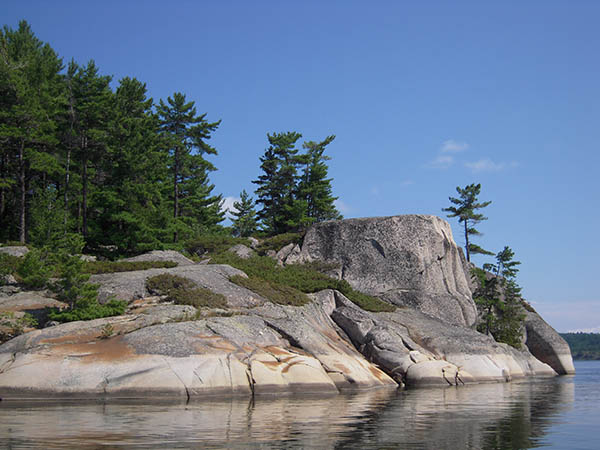Beaver Archipelago’s history and location led to financial riches and ethnic conflict, and made Big Beaver Island an economic center and a Mormon Kingdom.
Beaver Island Archipelago is comprised of fourteen islands of sandy soil atop ancient bedrock stubs in Lake Michigan. Big Beaver Island’s position became economically strategic during the broad harvest of beaver pelts. Control of fishing grounds, wood for steamships, and Beaver’s sheltered port created conflict between a succession of reclusive groups.
Beaver, at 56 square miles, is the largest island in the archipelago’s waters north of Traverse Bay. A fringe of upturned bedrock along the top of Michigan’s mitten turned aside the bulk of immense glaciers, preserving these landforms. Beaver Island is accessible by public ferry and airplane and its past enhances current tourism.
Beaver Island Commerce History
Buffeted by fierce winters, Beaver Island was not inhabited until the historical era, but the the sandy shoals surrounding the archipelago afforded good fishing and steady lake breezes lessened mosquitoes and biting flies. Early indigenous people knew of island resources and built mounds at Beaver Harbor, interring artifacts to be found of “uncommonly skillful workmanship.” Gillman, 1877
Under European invasive pressure from the east but modernized by the same, a band of Odawa people withdrew to Beaver in the 1700’s, and descendents remain on the island. Nearby Garden Island hosts thousands of graves, including some recent enough that burial “Spirit Houses” still stand.
The complex stream and river systems of Michigan and Wisconsin were home to millions of beaver, dam builders that slowed drainage to maintain forbidding marsh. When a market surged for beaver products in Europe and the Eastern US, incentive followed to open the mosquito-infested water corridors.
The harbor at Big Beaver is deep water embraced by a mile long sand spit ending at Whiskey Point, and by 1840 had become the economic hub representing hundreds of miles of open coast with thousands of acres trapped. Beaver pelt collection likely named the island.
The Mormon King and Irish Succession
As the beaver rush slowed, European immigrants were living in good number around two trading posts on Beaver Island, fishing and selling firewood to steamship companies. But the island had come to the attention of James Strang, a Mormon leader who, with four other men established residency in the spring of 1847.
Five families had shelter that first winter and despite resistance from earlier residents, their community swelled quickly to several hundreds with most former residents gone by 1850. Strang and his followers took up the island commerce of firewood and further developed Beaver’s fishing industry by supplying salted fish to a wide market.
These endeavors accomplished prominence for the Mormon people but also engendered political resentment. Strang began to consider Beaver Island independent of the US, himself as its king, and their town “St. James.” He was taken from the island by Federal agents and tried at Detroit, but acquitted of these acts as treason.
On the strength of his flock and voters elsewhere in the district who held regard for his success against the Federals, Strang won a seat in the 1853 Michigan legislature. He may have imagined a political legitimacy to match the success of commerce, but success and arrogance had created many enemies.
The public domain image of Strang used for this article is said to have been made by one of the men behind his 1856 assassination. Former disciples, the shooters had fired from behind a dockside woodpile and took protection aboard the US Steamship Michigan, the same boat that had taken him to trial. They were later delivered to Mackinac Island, Beaver’s chief economic competition, and released.
Strang died within several weeks and a mob from the mainland descended upon the island, burned the tabernacle, destroyed the library, and gave the Mormons one day to leave.
Over the next twenty years, Beaver Island increased an Irish population promoted by fishermen who tagged the island “America’s Emerald Isle.” By 1880 Gaelic was Beaver Island’s main language. The population dwindled when the lamprey eel decimated fishing, until tourism in the 1970’s renewed residential interest.








